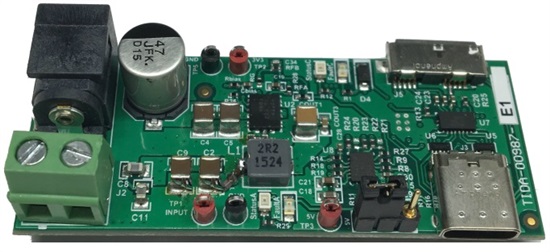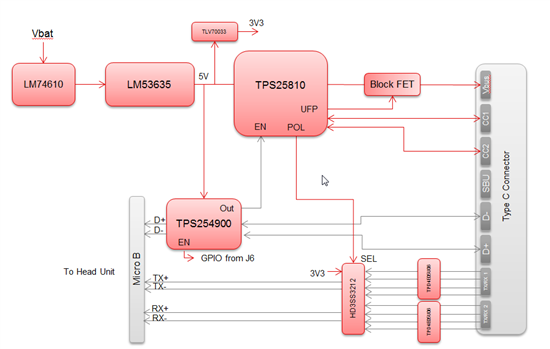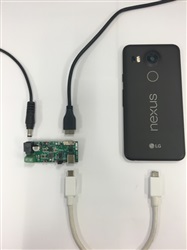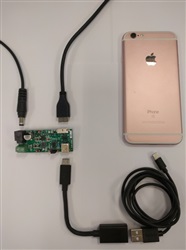SSZTAM6 november 2016 TPS25810
The latest and the greatest, the new USB Type-C™ connector is high powered (up to 100W), high speed (up to USB 3.1 data rates), and – what every clumsy person like me has been waiting for – it has flip- ability. A new 24-pin connector even has pins to make it compatible with legacy BC1.2 charging. It sounds so great, so there must be a catch, right?
The personal electronics industry has quickly adopted USB Type-C connectors, from USB Power Delivery-capable devices, which uses a standard 15W USB Type-C connector. The automotive industry has already starting adopting this versatile new connector in their next-generation cars.
But what happens when there is only a USB Type-C port in a car and no Type-A port? The USB Type-C connector is supposed to be backwards-compatible, so as long as you use an adapter, you should be able to charge your device. Smart car manufacturers will have designed their ports with that capability. Unlike traditional Type-A or Type-B ports, which physically determine if the hardware is a host or a device, a USB Type-C port does not have a physical distinction to establish such a relationship. Instead, USB Type-C uses configuration channel (CC) pins CC1 and CC2 to negotiate the initial power and data relationships before normal USB enumeration occurs.
Since Type-A ports are already the host port, the D+/D- lines take care of the power and data to begin charging. So how do you resolve the discrepancy between the new and the old? The TI Designs CISPR 25 Class 5 USB Type-C Port Reference Design with USB 3.0 Data Support in Figure 1 and Figure 2 can solve that problem.
The reference design connects TI’s TPS25810 USB Type-C controller between the 5V power source and the Type-C connector VBUS, while the TPS254900 legacy controller’s OUT pins connect to the TPS25810 power supply to control the VBUS discharge. With this setup, the TPS25810 takes care of the negotiation on CC lines when a Type-C to Type-C device is plugged in (Figure 3a), while the TPS254900 handles the negotiation for legacy devices when a Type-C to Type A device is plugged in (Figure 3b).
 Figure 1 TIDA-00987 Board
Figure 1 TIDA-00987 Board Figure 2 TIDA-00987 Block
Diagram
Figure 2 TIDA-00987 Block
Diagram

Because this design supports data pass-through, the port is a Charging Downstream Port CDP-compliant per USB BC1.2 requirements and supplies a minimum of 1.5A per port. It provides power and meets USB 2.0 requirements for device enumeration. USB 2.0 communication is supported, and the host controller must be active to enable charging when a USB Type-A device is plugged in (however, no host controller is necessary when plugging in a USB Type-C device).
There are many benefits to USB Type-C connectors, including flip-capable orientation, high-speed data rates and high power capabilities. Designers still need to provide the right hardware for backwards compatibility, however. For more information about the theory behind this configuration, see the application report, “TPS25810 Charging Port Over USB Type-C.”